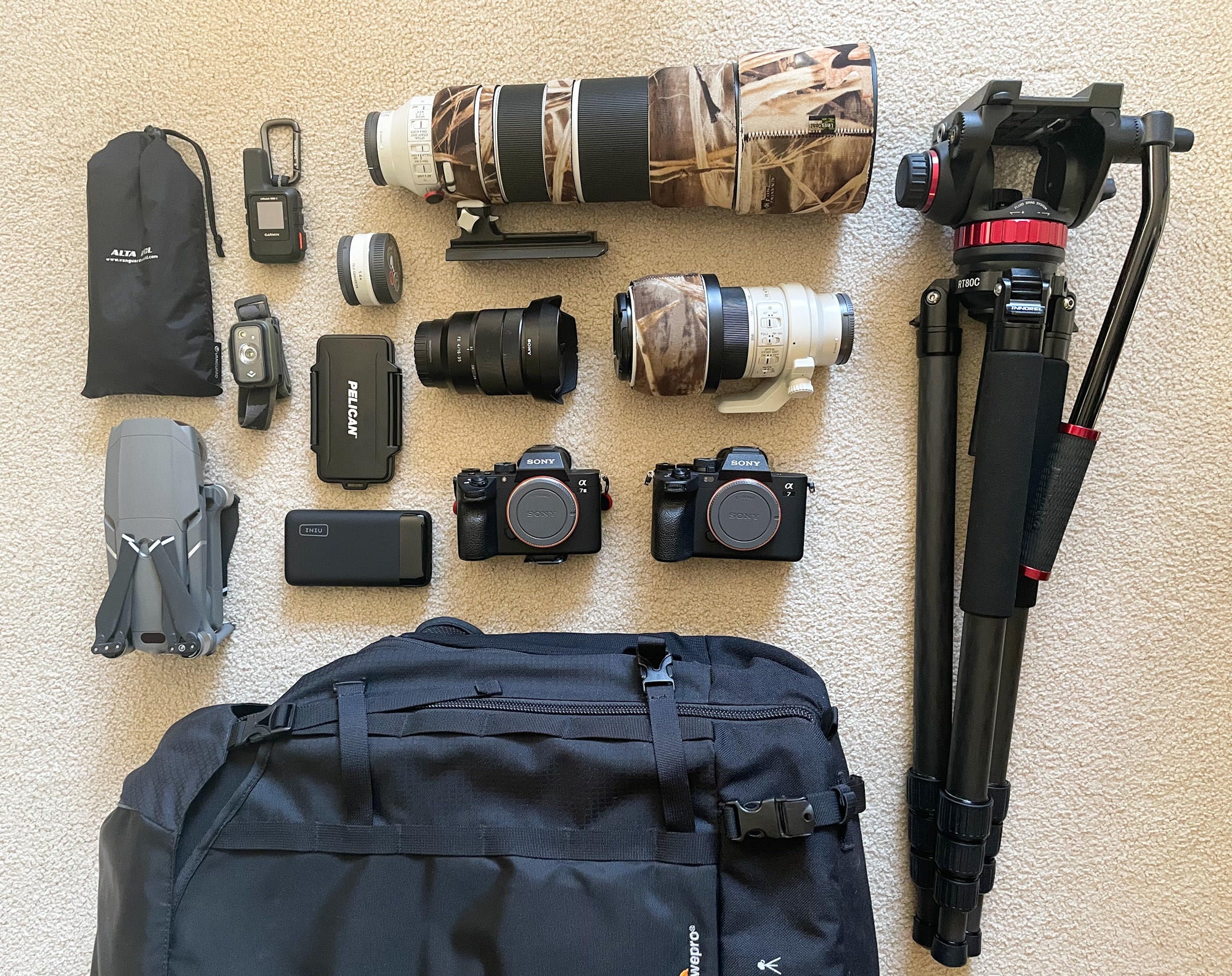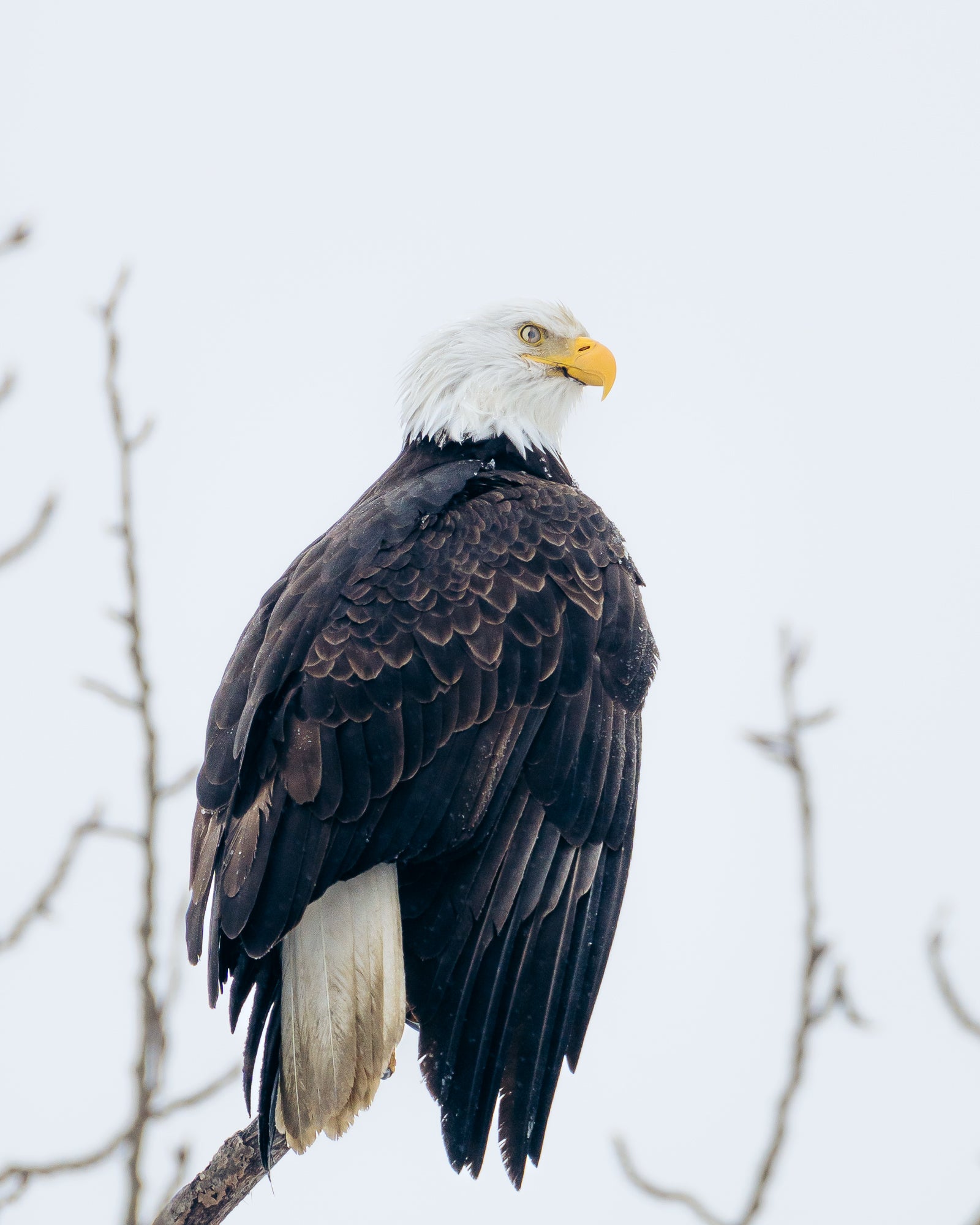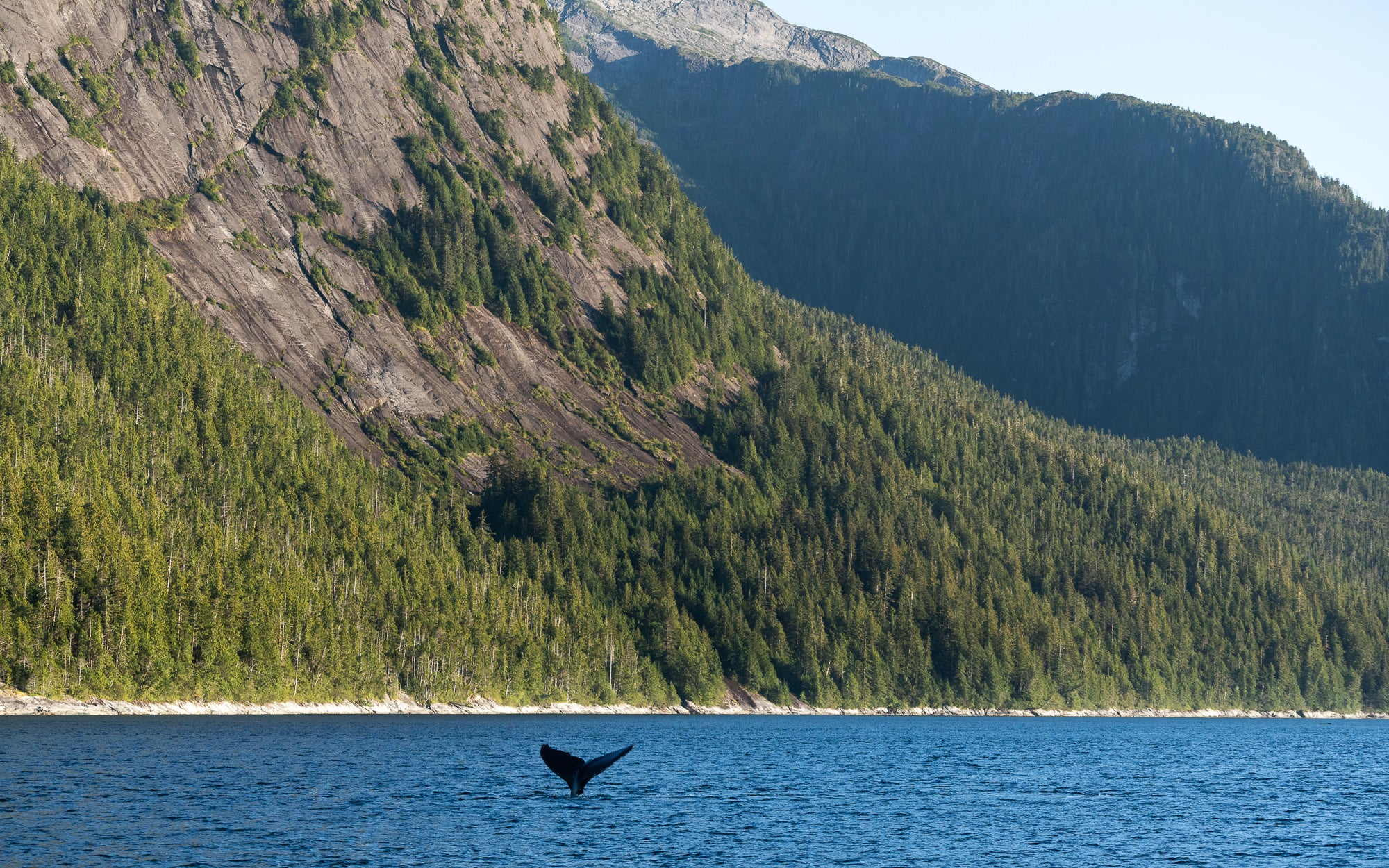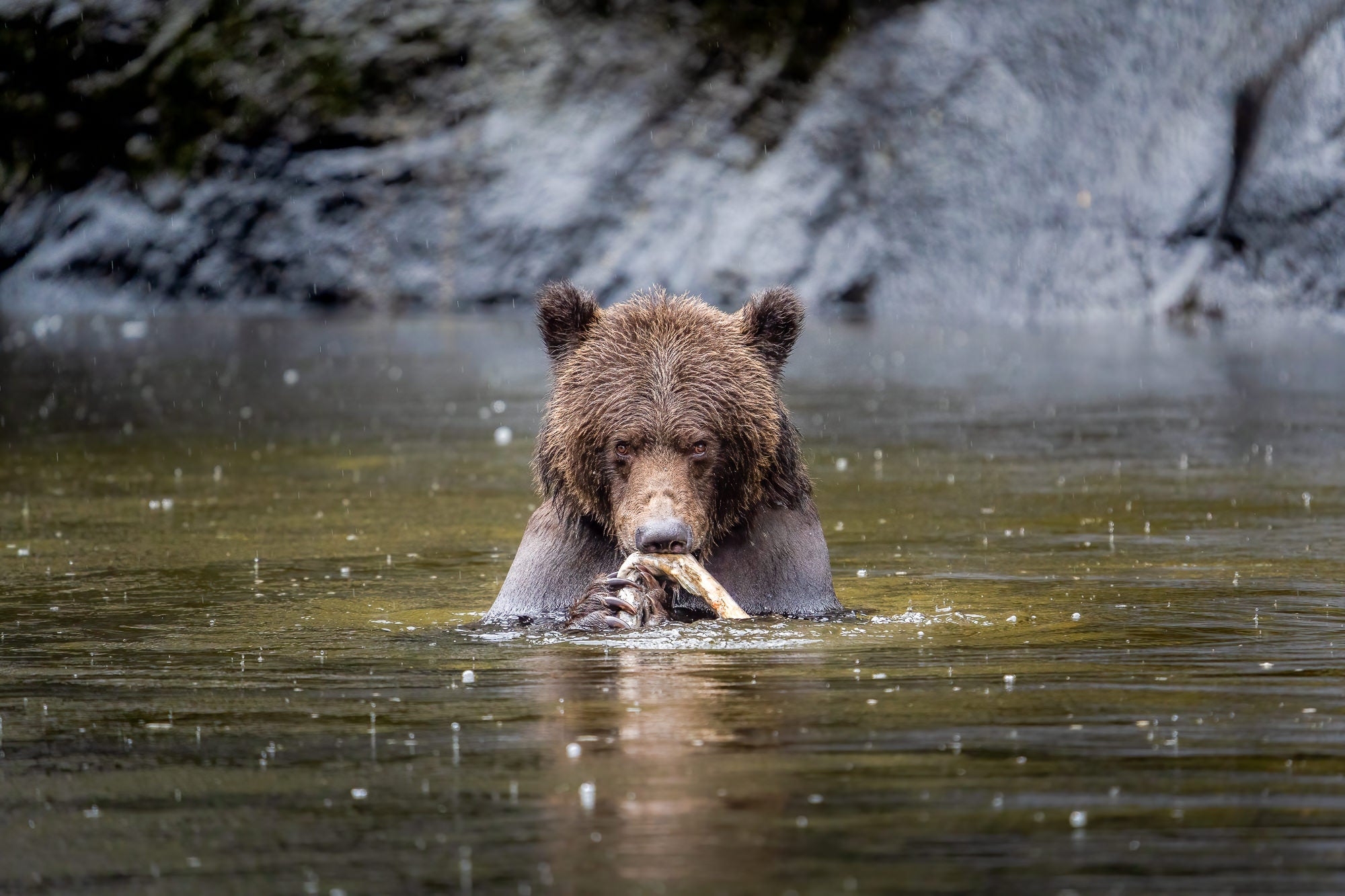Kali Wexler (@kwexphoto) is a Canadian wildlife conservation and nature photographer, based in British Columbia. Growing up and living on the B.C. coast instilled an early love for nature and a fascination towards both marine and forest ecosystems. When it comes to wildlife in B.C., there is a wide variety of species and Kali has been very lucky to spend time with some of the more elusive animals while exploring remote areas stretching from Vancouver to Alaska. Besides photography, Kali seasonally guides clients for coastal wolves, grizzly bears and spirit bears in the Great Bear Rainforest. Occasionally he also works as a camera assistant for natural history productions.
Kali’s images are often used in conservation efforts and he believes by documenting the natural world and sharing conservation issues, photos and video can have the power to impact positive change. “The conditions I work in are often very wet and remote. Traveling by boat, camping on beaches and having equipment soaked by rain or sprayed by ocean waves are all too common. The fact that my gear is lightweight, weatherproof and great in low light makes me a happy camper. Sony gear truly allows me to explore with confidence!” Keep reading to learn more about what’s in Kali's bag.

"The fact that my gear is lightweight, weatherproof and great in low light makes me a happy camper. Sony gear truly allows me to explore with confidence!" Wildlife conservation & nature photographer Kali Wexler
Cameras
Sony Alpha 7 IV: A recent change from the Sony Alpha 9 II, this camera’s hybrid ability is a game changer, it really does do everything well. With the recent transition to shooting more video, this camera allows me to easily switch between stills and higher quality video seamlessly. I program custom memory recall settings for both photo and video so it’s a simple toggle between the two. With incredible Animal Eye AF, I feel confident that my subjects will be in focus and with 33mp I have a bit more resolution for larger prints or cropping tighter in post. Since I don’t often shoot birds in flight, 10fps isn’t a major issue for me…however I’m keeping my eyes on the Sony a1 as we all know that camera is a beast! Silent shooting is a must for wildlife, often the sound of a shutter is enough to affect the animals natural behavior. After spending days or even weeks in the field to get the shot the last thing you want is an animal getting spooked, so I keep my cameras set to silent always.
Photo by Kali Wexler. Sony Alpha 7 IV. Sony 200-600mm f/5.6-6.3 G. 1/640-sec., f/6.3, ISO 200
Sony Alpha 7 III: A back up camera is an absolute must for any professional, especially when working in remote locations. As the predecessor to the Alpha 7 IV, it does both photo and video well. It lacks a couple of the newer features offered on the Alpha 7 IV, but otherwise it does everything needed for a great hybrid camera. It’s a solid back-up camera that still holds up today and has produced many of my best shots over the years.
Photo by Kali Wexler. Sony Alpha 7 III. Sony 200-600mm f/5.6-6.3 G. 1/800-sec., f/6.3, ISO 1000
Lenses
Sony 200-600mm f/5.6-6.3 G: A versatile super telephoto zoom lens that’s lightweight, super sharp (even wide open) and thoroughly weather sealed. This lens stays fixed to my main camera 99% of the time for wildlife. It allows me to get “closer” to my subjects without interfering with their behavior, but also allows me to pull back a bit to capture more of their environment. I love the internal zoom, making this a well balanced lens to shoot either handheld or fixed on a tripod.
Photo by Kali Wexler. Sony Alpha 7 III. Sony 200-600mm f/5.6-6.3 G. 1/800-sec., f/6.3, ISO 10000
Sony 70-200mm f/4 G: Not the fastest glass in this range, but it’s super light, packable and a workhorse for multiple applications. I’ve had it forever and it comes with me literally everywhere I go, even when scrambling up mountains or traveling internationally with family. It’s compact and offers a great focal range for a variety of shooting styles (not just wildlife). I actually love this lens mostly for outdoor portraits and lifestyle shots.
Photo by Kali Wexler. Sony Alpha 7 IV. Sony 70-200mm f/4 G. 1/2500-sec., f/5, ISO 1250
Sony 16-35mm f/4: A wide angle always finds space in my bag no matter the location or assignment I’m on. Landscapes help tell stories by showing the bigger picture. This lens is super versatile, probably my favorite everyday (non-wildlife) lens. Toss on a ND filter and it’s my go-to for long exposures and timelapses.
Accessories
Sony 1.4X Teleconverter: For those situations where you need a bit more reach. Sometimes you just need that extra focal length.
Lowepro Pro Trekker 450 AW: I’ve had many bags, but this is the one I keep going back to. Generally I use sealed waterproof cases when working in a marine environment, but as far as backpacks go, this has proper padded straps and back support with enough space to carry all the above gear plus more.
Carbon Tripod + Fluid Head: Lightweight and sturdy. For video a fluid head is a must. I do not rely on a tripod for most of my wildlife photography, but it does have it’s applications. And as everyone knows, if you don’t bring it you’ll wish you did.
Garmin inReach Mini 2: A lot of the B.C. coast is well outside of cell service, so this allows me to check in with loved ones as well as contact emergency services if ever needed.
Photo by Kali Wexler. Sony Alpha 7 IV. Sony 200-600mm f/5.6-6.3 G. 1/1600-sec., f/6.3, ISO 2000
Headlamp: A good headlamp with extra batteries is always in my kit. You never know when you might need a good light source. Save your iPhone battery and keep your hands free.
Rain Cover: Self explanatory, but absolutely essential. In addition to my personal rain gear and backpack rain cover, I also carry a rain cover that fits my camera and largest lens.
Pelican Memory Card Case: A secure waterproof case to store cards is critical. Good memory cards are expensive, and the media on them is priceless.
Drone: Sometimes a birds-eye perspective is what really helps to convey a story. It can also be a useful scouting tool.
Power Bank: A large 20,000 milliamps per hour (mAh) power bank comes in handy to charge phone or camera batteries if needed.
Extra Batteries: Sony NP Fz100 batteries are awesome and last a long time. I always keep extras in my bag and in a warm jacket pocket ready to go.
See more of Kali Wexler’s work on Instagram (@kwexphoto).




























